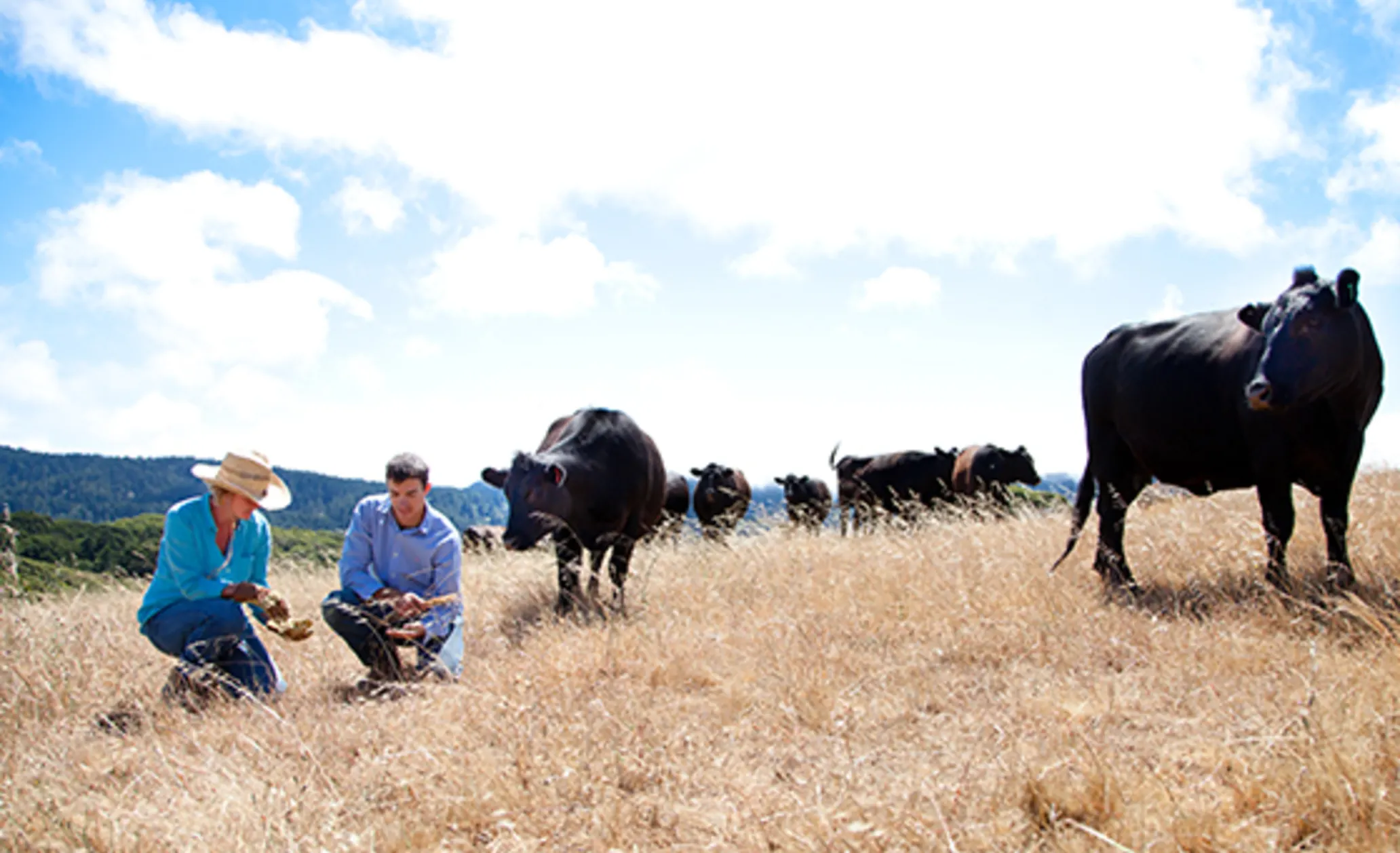Realizing the potential of carbon farming
The vast carbon storage potential of natural ecosystems worldwide is just now coming to light, but one local land trust has already spent a decade deliberately increasing the carbon held in its conserved grasslands.

The vast carbon storage potential of natural ecosystems worldwide is just now coming to light, but one local land trust has already spent a decade deliberately increasing the carbon held in its conserved grasslands. The accredited Marin Agricultural Land Trust in California helped launch the Marin Carbon Project to see whether improved agricultural management practices, such as managed grazing and spreading compost on rangeland, could help soil take up more atmospheric CO2.
Data from the past nine years show that a single compost application led treated soils to store one metric ton more carbon per hectare per year — a much greater increase than expected. Their findings confirm extensive research that such practices as fertility management, cover cropping and rotational grazing increase soil’s capacity to absorb and hold carbon.
At MCP’s first demonstration project, Stemple Creek Ranch, soils already had relatively high carbon levels from decades of sound stewardship. But owner Loren Poncia saw further increases as an important means to minimize runoff and ameliorate the effects of drought: “I want my ranch to be a sponge when it rains, and [soil]carbon is essentially a sponge.” Soil with 5% organic matter can absorb six times more water than soil with only 1% organic matter. With more extended droughts interspersed by deluges, increasing capacity for water retention can help keep ranches like Poncia’s more resilient and productive.
A new “Carbon Farm Planning” process developed by MALT and MCP identifies up to 35 agricultural management practices that benefit the climate — either by absorbing and storing carbon or helping make the land more resilient to climate change. Carbon farming has become so popular that MALT Director of Conservation Jeff Stump says there are “twice as many applicants each year as we can complete plans for.” The MCP model is now replicated by Resource Conservation Districts in 20 California counties and several states.
MALT raises private funds to offer more local ranchers incentives for adopting and implementing Carbon Farm Plans. Fundraising for stewardship work is always challenging but donors find the carbon-climate link inspiring, and several have made large dedicated gifts. According to Stump, “This is the first time our donors are saying, ‘I get it. There is something I can do at the local level to address climate change.’”
Carbon farming is also strengthening MALT’s ties to farmers and ranchers who now see firsthand both the personal and planetary benefits of conservation stewardship. “It is really improving long-term relationships with landowners,” Stump says, “and helping move their operations toward more economic and ecological sustainability.”
This article originally appeared in the spring 2018 issue of Saving Land magazine.